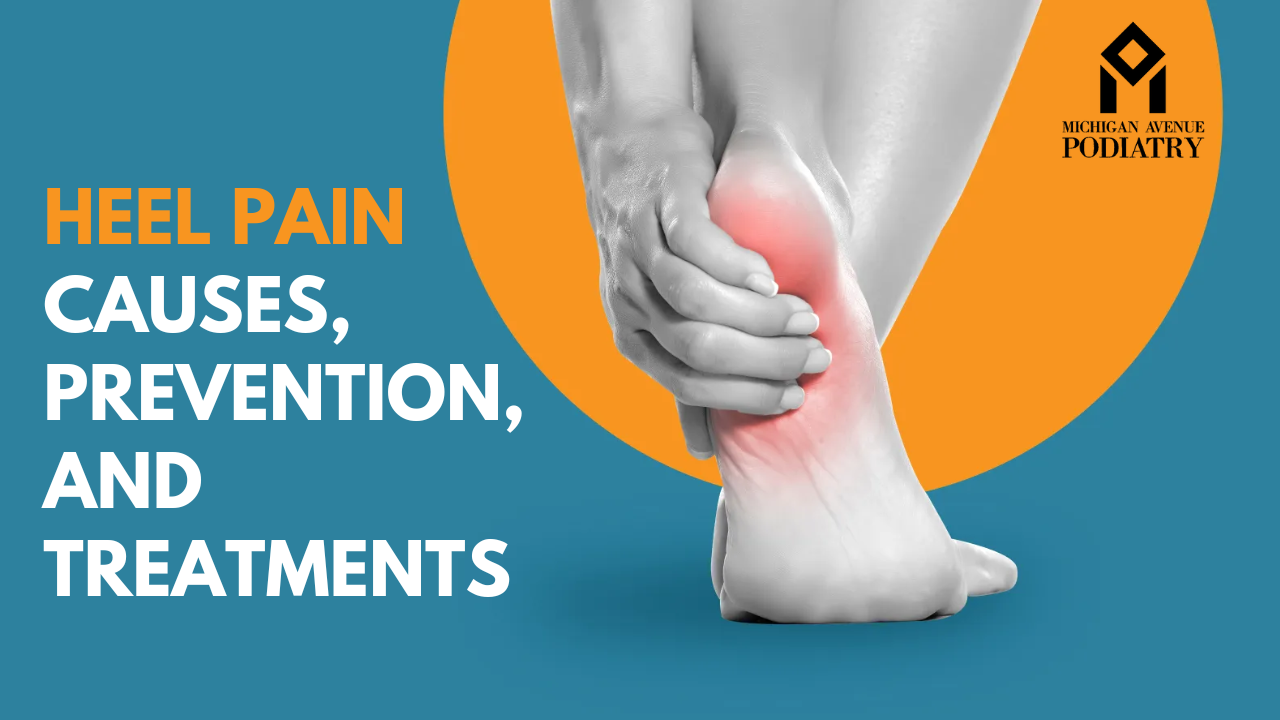Heel pain is a common foot condition that can significantly impact daily activities and quality of life. Whether it’s sharp stabbing pain in the morning or a dull ache after prolonged standing, heel pain can be debilitating if left untreated. In this informative blog post, we will delve into the various causes of heel pain, strategies for prevention, and effective treatments recommended by podiatrists to alleviate discomfort and restore mobility.
Understanding the Causes of Heel Pain:
- Plantar Fasciitis: Plantar fasciitis is one of the most common causes of heel pain, characterized by inflammation of the plantar fascia—a thick band of tissue that connects the heel to the toes. Repetitive stress or strain on the plantar fascia, such as excessive standing, walking, or running, can lead to microtears and inflammation, resulting in heel pain, especially with the first steps in the morning.
- Heel Spurs: Heel spurs are bony growths that develop on the underside of the heel bone. While not always painful on their own, heel spurs can irritate surrounding soft tissues, such as the plantar fascia, leading to heel pain, particularly during weight-bearing activities.
- Achilles Tendinitis: Achilles tendinitis is inflammation of the Achilles tendon, the large tendon that connects the calf muscles to the heel bone. Overuse, improper footwear, or sudden increases in physical activity can strain the Achilles tendon, causing pain and stiffness in the back of the heel.
- Haglund’s Deformity: Haglund’s deformity, also known as “pump bump,” is a bony enlargement on the back of the heel bone. It is often associated with wearing tight or ill-fitting shoes that irritate the heel, leading to pain, swelling, and inflammation.
- Stress Fractures: Stress fractures are tiny cracks or breaks in the bones of the foot, including the heel bone (calcaneus). Repetitive stress or impact activities, such as running or jumping, can cause stress fractures in the heel, resulting in localized pain and tenderness.
Also Read
Prevention Strategies for Heel Pain:
- Wear Supportive Footwear: Choose shoes with adequate arch support, cushioning, and shock absorption to reduce stress on the heels and minimize the risk of heel pain. Avoid wearing high heels or shoes with narrow toe boxes for extended periods, as they can exacerbate heel pain and contribute to foot problems.
- Maintain Healthy Body Weight: Excess body weight can place additional strain on the feet and exacerbate heel pain. Maintain a healthy body weight through a balanced diet and regular exercise to reduce stress on the feet and lower the risk of heel pain.
- Stretch and Strengthen: Incorporate regular stretching and strengthening exercises into your routine to improve flexibility and muscle strength in the feet and lower legs. Focus on stretching the calf muscles, Achilles tendon, and plantar fascia to prevent tightness and reduce the risk of heel pain.
- Gradual Progression: Avoid sudden increases in physical activity or changes in training intensity to prevent overuse injuries and stress fractures. Gradually increase activity levels and incorporate rest days to allow for recovery and reduce the risk of heel pain.
Effective Treatments for Heel Pain:
- Rest and Ice: Resting the affected foot and applying ice packs to the heel can help reduce inflammation and alleviate pain. Apply ice for 15-20 minutes at a time, several times a day, to the affected area.
- Orthotic Inserts: Custom orthotic inserts or over-the-counter arch supports can provide additional cushioning and support for the feet, helping to alleviate pressure on the heels and reduce heel pain. Podiatrists can recommend and fit patients with appropriate orthotics based on their individual foot structure and needs.
- Stretching Exercises: Perform gentle stretching exercises for the calves, Achilles tendon, and plantar fascia to improve flexibility and reduce tension in the muscles and tendons of the feet and lower legs. Hold each stretch for 30 seconds and repeat several times throughout the day.
- Physical Therapy: In cases of severe or persistent heel pain, physical therapy may be recommended to strengthen the muscles of the feet and lower legs, improve range of motion, and address underlying biomechanical issues contributing to heel pain.
- Corticosteroid Injections: Injections of corticosteroids may be used to reduce inflammation and alleviate pain in cases of severe or persistent heel pain, such as plantar fasciitis or Achilles tendinitis. However, corticosteroid injections are typically reserved for cases that do not respond to conservative treatments.
Conclusion:
Heel pain can significantly impact mobility and quality of life, but with proper understanding of its causes, prevention strategies, and effective treatments, individuals can find relief and restore function to their feet. Whether it’s incorporating supportive footwear, practicing stretching exercises, or seeking treatment from a podiatrist, there are various options available to address heel pain and promote foot health. If you’re experiencing persistent or severe heel pain, consult with a podiatrist for a comprehensive evaluation and personalized treatment plan tailored to your specific needs. With proper care and management, you can alleviate heel pain and get back on your feet, enjoying an active and pain-free lifestyle.

